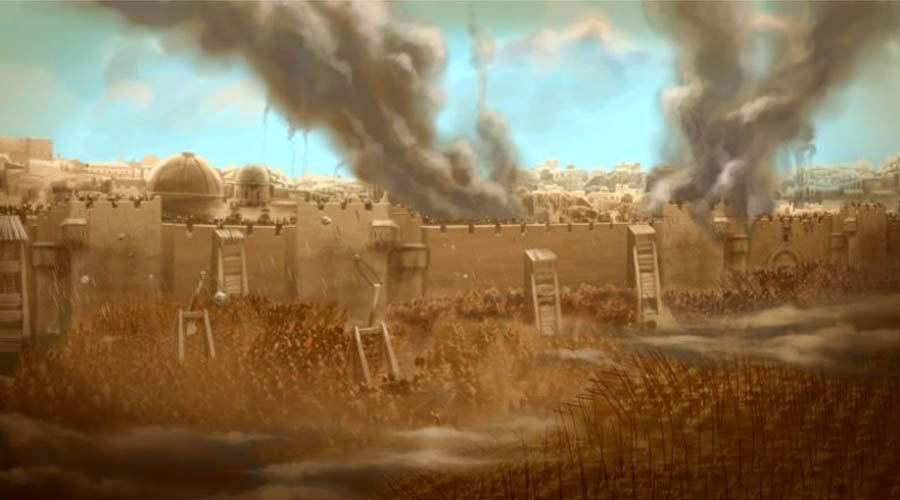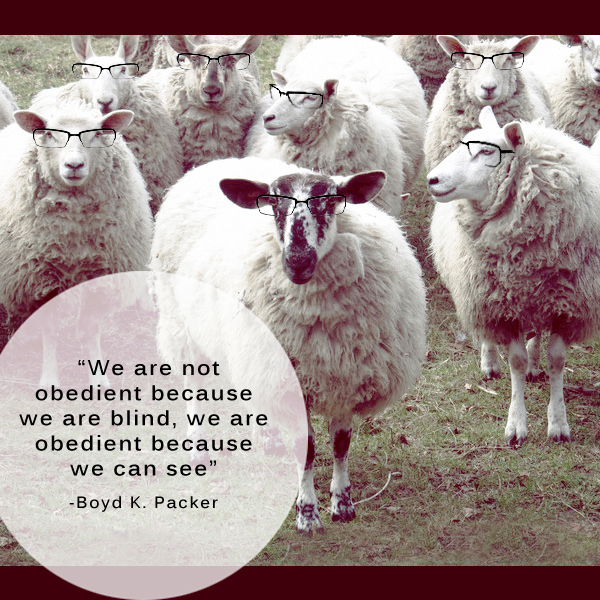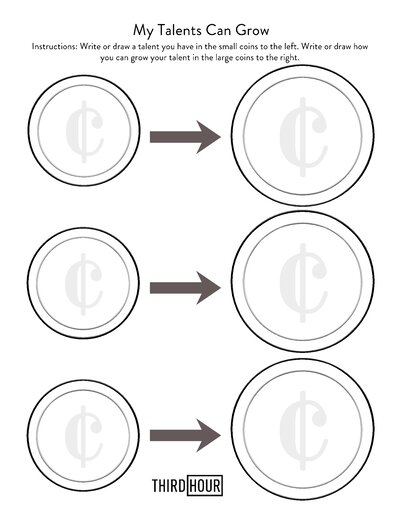“The Son of Man Shall Come”
The lesson begins with Joseph Smith Matthew 1. The Lord told Joseph he should work on a translation of the Bible and Joseph began the task in 1830. He was still making modifications up until the time of his death. Some parts were published while he was still alive. As he worked on the Bible, questions came into his mind and the Lord answered them. Those revelations are recorded in the D&C.
The Book of Moses and JST Matthew 24 are included in the Pearl of Great Price. Translations of other various biblical verses can be found in the footnotes and appendix of the Bible. Joseph’s translation of the Bible was meant to restore “…many important points touching the salvation of men, [that] had been taken from the Bible, or lost before it was compiled.” Although Joseph received constant revelation, the process was different than for the translation of the Book of Mormon. Joseph didn’t have the Bible in Hebrew or Greek, but was working with English. So a translation didn’t come to him word-for-word as it did with the Book of Mormon. He also had access to other commentaries about the Bible.
After Joseph was martyred, Emma kept the translation and refused to hand the manuscript over to the Twelve. In 1866, Emma Smith gave the manuscript into the custody of the Reorganized Church of Jesus Christ of Latter Day Saints (RLDS Church), now called The Community of Christ. They have made some edits to the translation. Beginning in the 1960s the two churches have worked together on scholarship. Bruce R. McConkie said, “The Joseph Smith Translation, or Inspired Version, is a thousand times over the best Bible now existing on earth.”
Jesus will come again (JST Matthew 1:1):
There were so many new concepts for the apostles of Christ to understand. Jesus had set up His church completely outside the authority and order of the Law of Moses. He ignored the Levitical order and the high priests. Although John the Baptist was a Levite, he baptized in an original way, under a different authority, to a different end. Christ’s apostles were not of the traditional priestly order — they were fishermen and publicans.
No one had ever risen from the dead, and the Jews did not believe in a mediator between them and God. They did not envision a divine Son of God as their savior. Jesus was trying to teach His apostles that, first of all, He was going to die. Secondly, He was going to resurrect and take up His life again. Thirdly, He was going to guide them using revelation through the Holy Ghost. In verse one we see that He was going to be glorified at the right hand of the Father, and then another new concept: He was going to return to rule on earth.
It appears that the apostles understood that Jesus would return, but not the timing of that return. The very early Christians expected the Second Coming in their lifetimes, and many generations since have also felt like the Second Coming was imminent, especially if great trials surrounded them. For example, in 14th century Europe, war and plague caused the people to think the end was near.
Jesus prophesies the destruction of the temple (JST Matthew 1:2):
 Herod’s temple was completely destroyed in 70 AD when the Romans laid siege to Jerusalem. The siege began 3 days before Passover, so there were thousands of pilgrims who sought refuge within the walls of a really tiny city. Starvation beset the people almost instantly. The siege lasted 4 months, and the Romans completely destroyed the temple in August. The original idea was to spare the temple and dedicate it to Zeus, but it caught fire during the battles.
Herod’s temple was completely destroyed in 70 AD when the Romans laid siege to Jerusalem. The siege began 3 days before Passover, so there were thousands of pilgrims who sought refuge within the walls of a really tiny city. Starvation beset the people almost instantly. The siege lasted 4 months, and the Romans completely destroyed the temple in August. The original idea was to spare the temple and dedicate it to Zeus, but it caught fire during the battles.
The Christians living in Jerusalem escaped before the siege:
Many of Christ’s revelations have more than one fulfillment. There will be a siege of Jerusalem that ends the war of Armageddon, still in the future. But the siege predicted by Christ also had a fulfillment in 70 AD. The Christian community carefully watched for the signs and followed the Savior’s warning.
The believers obeyed the warnings, fled Jerusalem to a town called Pella, and thus saved themselves. The early Christian scholar Eusebius wrote:
“The whole body, however, of the church at Jerusalem, having been commanded by a divine revelation, given to men of approved piety there before the war, removed from the city, and dwelt at a certain town beyond the Jordan, called Pella.”
Read more about how the Christians were led to safety.
The signs of the times (JST Matthew 1:5 – 55; Mark 13; Luke 21):
Jesus began to lay out the signs that will precede His coming, and indeed, they are frightening. Other Christian faiths speak of 7 years of tribulation (adding together 3.5 years for the coming anti-Christ and 3.5 years of war centered in the Megiddo Valley (Armageddon). A minority of Evangelical Christians believe in a non-biblical, pre-tribulation rapture in which the righteous will be taken up one by one so they won’t have to live through the most difficult 7 years.
The Book of Mormon and Doctrine and Covenants give us more information on the signs of the times, and the coming forth of the Book of Mormon is one of the most important. Here is an article with an extensive list.
The Parable of the Ten Virgins (Matthew 25:1 – 13):
 The above is a replica of a Herodian period oil lamp. Such lamps used olive oil as fuel and were small enough to nestle in the palm of one’s hand. These lamps produced the light of a single candle, just enough to light one’s way a few steps ahead in the dark. Thus, this is a personal light that can’t really be shared or borrowed without leaving the owner stranded in the dark.
The above is a replica of a Herodian period oil lamp. Such lamps used olive oil as fuel and were small enough to nestle in the palm of one’s hand. These lamps produced the light of a single candle, just enough to light one’s way a few steps ahead in the dark. Thus, this is a personal light that can’t really be shared or borrowed without leaving the owner stranded in the dark.
The virgins who would not share their oil were not being selfish. This is not a case of using your light to light the candles of others. The foolish virgins were bereft of the fuel that gave them individual light, that light which would lead them to the Savior. Brigham Young said that he and other Saints in Utah lived constantly in a saved state. They were always prepared to meet, serve, and embrace the Savior. This is our preparation. To always be ready.
The Parable of the Talents (Matthew 25:14 – 30):
The Parable of the Talents is repeated elsewhere using pounds instead of talents. Both were units of money and weights of precious metals. Here the Lord is teaching a principle that can be difficult to accept. “For unto every one that hath shall be given, and he shall have abundance: but from him that hath not shall be taken away even that which he hath” (v. 29). It may be easier to picture this as an abundance of light and truth. Those who seek and increase will receive an abundance (beyond their imagination) in heaven, while those who hide their light receive no reward.
It might be rewarding to discuss what it means to magnify our gifts, blessings, and callings. Close your eyes and imagine yourself sitting with the Lord as you are about to leave the pre-existence and enter mortality. The Lord gives you gifts to take with you that are unique to you. What gifts did you receive? What have you done with them?
The least of these my brethren (Matthew 25:31 – 46):
This parable begins with separating the sheep from the goats. WagWalking.com gives us straight up advice about herding goats:
Ever heard the expression “stubborn old goat”! Well, that’s the problem with herding goats–they are stubborn! Unlike sheep that tend to group together in a flock, making it easier to herd them all together, goats tend to go in every direction, independent of each other. They also fight back, are not easily intimidated, and can go straight up as well as side to side! This makes herding goats with a dog or any other method, extremely challenging.
Read more at: https://wagwalking.com/training/herd-goats
Sheep, however, know their master’s voice and will follow it unless they get separated from the flock and become lost. Which, sheep or goats, are more likely to follow Christ. Father will separate the rebellious from the obedient at the final judgment. Note that goats don’t follow blindly. We don’t follow the Savior because we are blind. We follow because we can see.

The Parable of the Wicked Husbandmen (Mark 12:1 – 12):
The Lord, of course, is the Lord of the vineyard. The caretakers of the vineyard, the husbandmen, are Israel, whom God has chosen and given care of His kingdom on earth. The servants are the prophets, whom Israel rejected, and the Son is Christ Himself. You might want to compare this parable to the modern one in Section 101 of the Doctrine and Covenants. Here, the husbandmen are simply lazy and never complete the tower. They fail to see the enemy coming and the vineyard is destroyed. We may not be like those who kill the prophets, but we still may be poor caretakers of the vineyard if we are lazy in keeping the commandments.
Do people marry in heaven? (Mark 12:18 – 27):
Most other Christians believe there is no marriage in heaven because of these verses. There are no marriages performed in heaven, because marriages must be performed on earth. However, marriages that are sealed on earth by the authority of the priesthood in temples of The Church of Jesus Christ of Latter-day Saints are bound in heaven and last for eternity according to the righteous desires of the spouses.
The righteous scribe (Mark 12:28 – 33):
A scribe asked Jesus which are the greatest commandments. Christ answered that we are to love God completely and our neighbors as ourselves. The scribe answered: “And to love him with all the heart, and with all the understanding, and with all the soul, and with all the strength, and to love his neighbour as himself, is more than all whole burnt offerings and sacrifices.” Jesus told the scribe he was not far from the kingdom of God. Among the converts to Jesus’ fold were Samaritans, scribes, and even Roman Centurions.
Lesson Resources:
churchofjesuschrist.org — Come Follow Me



